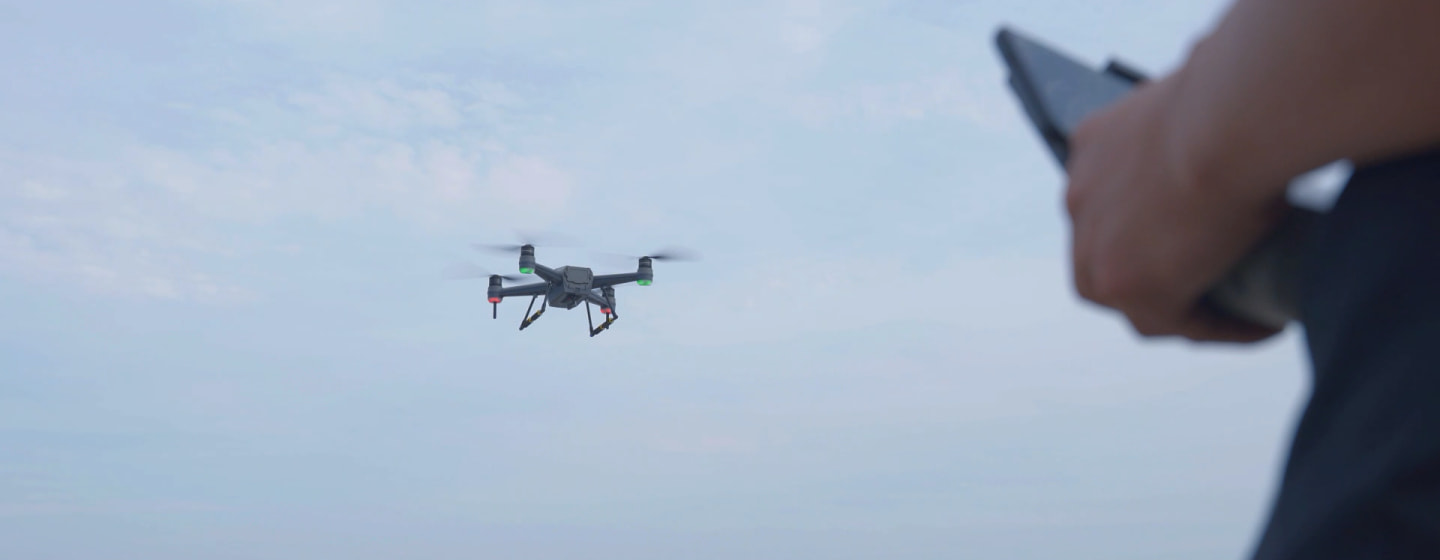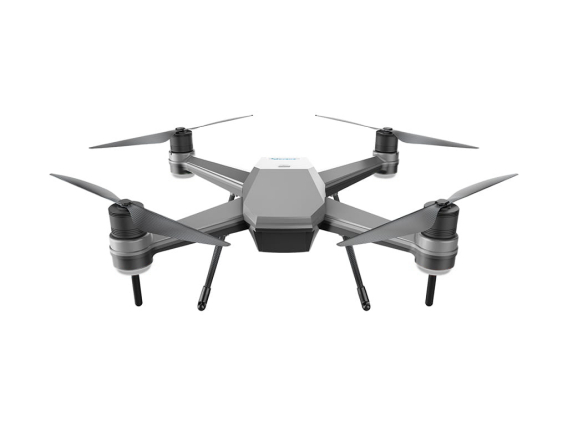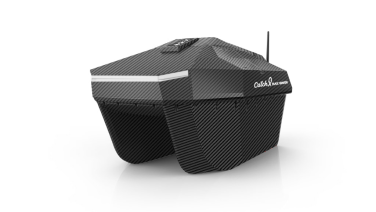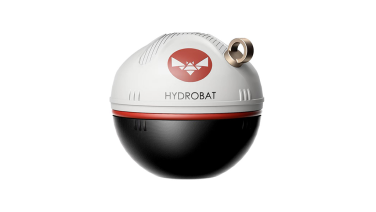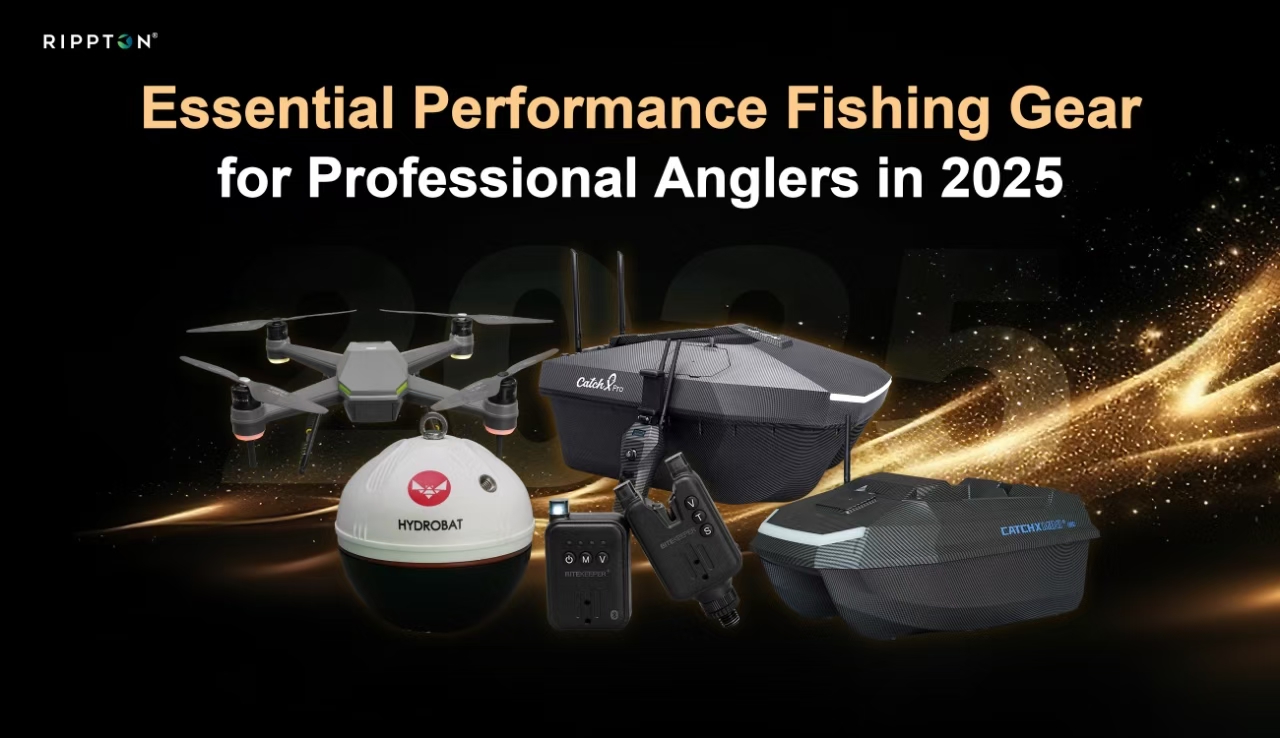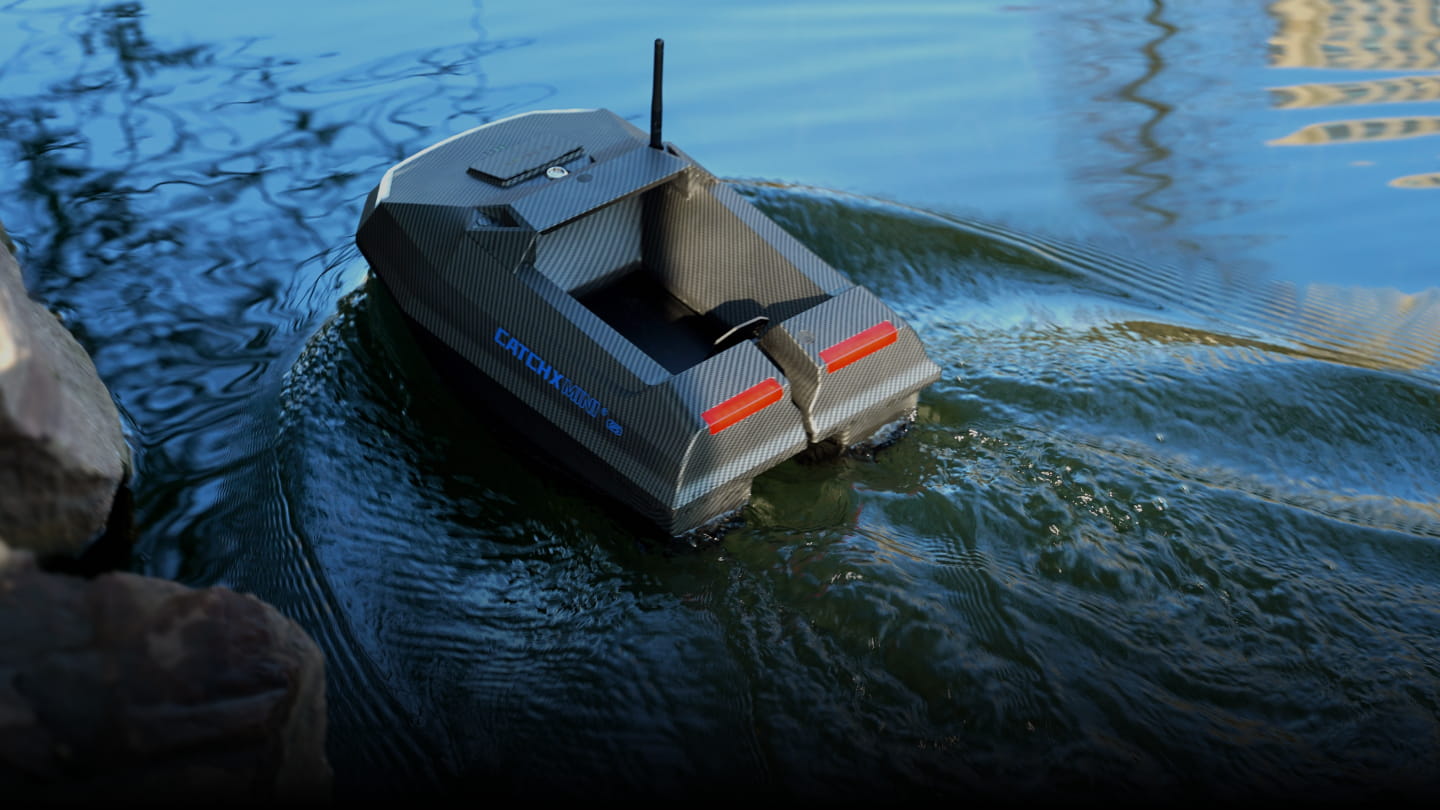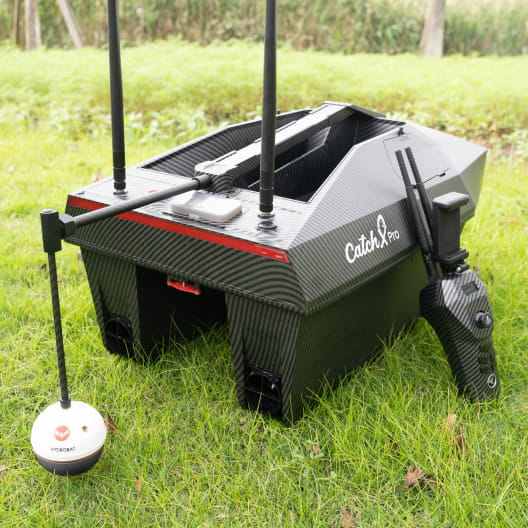
Welcome to Rippton.com, your premier source for high-quality fishing drones from Rippton. Our production of waterproof bait release drones is second to none, and our team is committed to bringing you the latest in fishing drone technology.
We understand that fishing with drones is more than just a hobby - it's a passion. That's why we only offer the best products on our shelves, ensuring that you get the most out of your catches on the water. Whether you're a seasoned angler or a beginner, our fishing drones will take your fishing experience to the next level.
Our production of bait drones is diverse and includes various options to suit different fishing styles and environment. All of our fishing drones are built to be rugged and durable, so you can take them anywhere you want to go, whether it's a rugged coastline or a serene lake.
Don't wait any longer - order now and take your fishing experience to the next level with Rippton!
Waterproof Fishing Drones for Sale
SharkX
Waterproof Fishing Drone
SHARKX Waterproof Fishing Drone is the perfect companion for all your fishing and aerial adventure needs! This waterproof drone for fishing is designed to withstand tough weather conditions, making it a great choice for fishing trips. It features an auto weighing system to accurately measure the weight of your bait, an overloading alert to prevent the drone from being overloaded, and a portable design for easy transportation. With a 18-minute maximum flight time, 12m/s wind resistance, 1km max range, and 3kg payload capacity, this Rippton drone is sure to help you savour the perfect moments of fishing. The included remote control also allows you to easily control the drone from a distance.
Buy Now Discover More
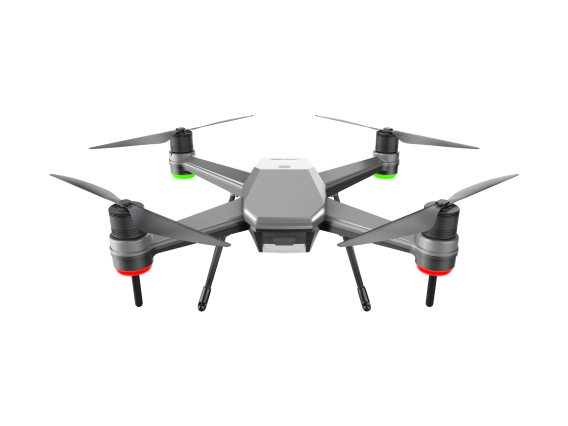
SharkX Plus
Smart Bait Release Drone with High Resolution Camera
The SharkX Plus Fishing Drone is the ultimate waterproof fishing companion that is designed to take your fishing experience to new heights. Equipped with a high-resolution camera, this drone allows you to scout offshore areas and stream live video back to your app, giving you an edge over traditional fishing methods. With its advanced technology, the SharkX Plus Fishing Drone can fly over the water and drop heavy bait and fishing line in hard-to-reach areas up to 1km away, making it easier to reach fish that are further away from the shore and increase your chances of catching more fish. With the SharkX Plus Fishing Drone, you can enjoy a safe and enjoyable fishing experience, no matter where you are.
Advantages of Rippton Fishing Drone
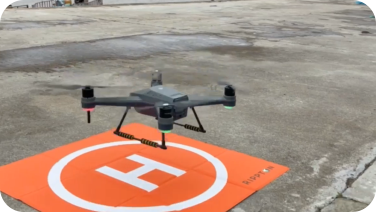
Autopilot
The autopilot feature allows the drone to fly with ease, so you can focus on the fishing.
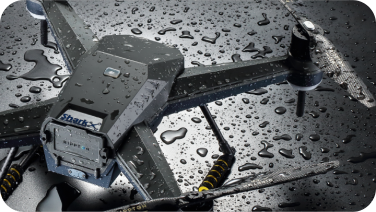
Waterproof
The waterproof fishing drone is designed to be waterproof, allowing it to be used on water without worry.

Long Distance
With its long-distance range, you can take your fishing drone to explore further for the catch of the day.

Compact and Light
This bait release drone is designed to be compact and lightweight, making it easy to carry and store.

Supreme Flight Performance
Powered by cutting edge technologies, the Rippton fishing drones demonstrate supreme stability and durability in flight under different weather conditions.
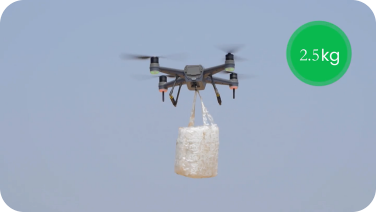
Overloading Alert
The fishing drone will alert you if it's overloaded with its load capacity, so you can safely land it and avoid any potential accidents.
Best Bait Dropping Drone for Ultimate Fishing Experience
FAQ
Fishing drones are remote-controlled flying devices equipped with cameras, allowing anglers to scout and locate fish in the water. They can fly over a larger area than traditional fishing methods and provide a bird's eye view of the underwater environment. Fishing drones offer several benefits, such as increased accuracy in locating fish, better overall fishing efficiency, and access to hard-to-reach fishing spots.
Yes, fishing drones can increase catch rates compared to traditional fishing methods. They can extend your fishing range beyond what's reachable from the shoreline. Additionally, fishing drones enable precise bait delivery, increasing the chances of luring fish to the bait.
When buying a fishing drone, some top features to consider are:
Flight time and range: Consider the drone's battery life and how far it can fly on a single charge.
GPS capabilities: Drones with GPS technology can track location and return to base automatically.
Stability and maneuverability: Look for drones with good stability control and easy-to-use navigation systems.
Payload capacity: Consider the drone's capacity to carry bait and other fishing equipment.
Return-to-home function: This feature enables the drone to return to the launch point if it loses the connection or runs low on battery.
Flight time and range: Consider the drone's battery life and how far it can fly on a single charge.
GPS capabilities: Drones with GPS technology can track location and return to base automatically.
Stability and maneuverability: Look for drones with good stability control and easy-to-use navigation systems.
Payload capacity: Consider the drone's capacity to carry bait and other fishing equipment.
Return-to-home function: This feature enables the drone to return to the launch point if it loses the connection or runs low on battery.
Regulations and restrictions on using fishing drones for fishing may vary depending on the location and governing authorities. It is essential to familiarize yourself with local fishing regulations before using a fishing drone. Some areas may have restrictions on the use of drones, while others may require registration or specific permits. It is the angler's responsibility to comply with all applicable fishing regulations and obtain any necessary permissions.
The distance and flight time of fishing drones depend on the specific model and its technical specifications. Generally, fishing drones can fly up to several kilometers and stay airborne for around 20-30 minutes on a single battery charge. However, these numbers may vary based on various factors like weather conditions, payload weight, and flight speed.
Various types of bait can be attached to a fishing drone, such as live bait, artificial lures, and chum. The type of bait that you use depends on the fish species you're targeting and your fishing preferences.
Fishing drones have a learning curve, but they are relatively beginner-friendly with some practice and familiarity. Most drones come with user-friendly remote controls and navigation systems. However, it is advisable to start with basic operations and gradually explore the advanced features. Practice in calm and open areas before attempting complex maneuvers or fishing in challenging environments.
The pros of using a fishing drone include:
Increased accuracy in locating fish and assessing underwater conditions.
Access to hard-to-reach fishing spots.
Precise bait delivery and increased chances of catching fish.
Efficient and time-saving fishing process.
Cons of using a fishing drone include:
The high cost of purchasing and maintaining a fishing drone.
The risk of losing or damaging the drone during flight.
The potential disturbance that the drone may cause to wildlife and other anglers.
Increased accuracy in locating fish and assessing underwater conditions.
Access to hard-to-reach fishing spots.
Precise bait delivery and increased chances of catching fish.
Efficient and time-saving fishing process.
Cons of using a fishing drone include:
The high cost of purchasing and maintaining a fishing drone.
The risk of losing or damaging the drone during flight.
The potential disturbance that the drone may cause to wildlife and other anglers.
Yes, there are several safety measures to be taken while using a fishing drone:
Follow local regulations: Familiarize yourself with any local laws or regulations regarding drone usage and fishing. Ensure you comply with all applicable rules, including registration requirements and flight restrictions.
Maintain line of sight: Always keep the fishing drone within your line of sight while operating it. This will help you maintain control and avoid collisions with other objects or people.
Fly in open areas: Choose open areas away from crowds, buildings, and power lines to minimize the risk of accidents or damage to property.
Be aware of weather conditions: Avoid flying your fishing drone in adverse weather conditions such as strong winds, rain, or fog. Unfavorable weather can affect the stability and navigation of the drone and increase the risk of accidents.
Check battery life and signal strength: Before flying, ensure that the drone's battery is fully charged and that the remote control has a stable signal connection. Low battery or weak signals during flight can lead to unexpected crashes or loss of control.
Beware of wildlife and other anglers: Be mindful of the presence of wildlife and other anglers in the area. Keep a safe distance to avoid disturbing birds, fish, and other animals. Respect the privacy and space of fellow anglers.
Emergency procedures: Familiarize yourself with emergency procedures provided by the drone manufacturer. Learn how to safely land the drone in case of technical issues or low battery situations. Practice emergency procedures in a controlled environment before venturing into more challenging locations.
Inspect equipment regularly: Regularly inspect your fishing drone and its components for any wear and tear. Check propellers, motors, and batteries for any signs of damage or malfunction. Replace damaged parts and perform routine maintenance as recommended by the manufacturer.
Follow local regulations: Familiarize yourself with any local laws or regulations regarding drone usage and fishing. Ensure you comply with all applicable rules, including registration requirements and flight restrictions.
Maintain line of sight: Always keep the fishing drone within your line of sight while operating it. This will help you maintain control and avoid collisions with other objects or people.
Fly in open areas: Choose open areas away from crowds, buildings, and power lines to minimize the risk of accidents or damage to property.
Be aware of weather conditions: Avoid flying your fishing drone in adverse weather conditions such as strong winds, rain, or fog. Unfavorable weather can affect the stability and navigation of the drone and increase the risk of accidents.
Check battery life and signal strength: Before flying, ensure that the drone's battery is fully charged and that the remote control has a stable signal connection. Low battery or weak signals during flight can lead to unexpected crashes or loss of control.
Beware of wildlife and other anglers: Be mindful of the presence of wildlife and other anglers in the area. Keep a safe distance to avoid disturbing birds, fish, and other animals. Respect the privacy and space of fellow anglers.
Emergency procedures: Familiarize yourself with emergency procedures provided by the drone manufacturer. Learn how to safely land the drone in case of technical issues or low battery situations. Practice emergency procedures in a controlled environment before venturing into more challenging locations.
Inspect equipment regularly: Regularly inspect your fishing drone and its components for any wear and tear. Check propellers, motors, and batteries for any signs of damage or malfunction. Replace damaged parts and perform routine maintenance as recommended by the manufacturer.
Proper maintenance and care for a fishing drone can help ensure its longevity. Here are some tips:
Regular cleaning: After each fishing trip, clean the drone to remove any dirt, debris, or saltwater residue. Use a soft cloth or brush and mild cleaning solutions specifically designed for drones. Avoid using harsh chemicals or spraying water directly onto the drone's electronic components.
Check propellers: Inspect the propellers regularly for any signs of damage, such as cracks or bends. Replace any damaged propellers promptly to maintain optimal flight performance.
Battery maintenance: Follow the manufacturer's guidelines for battery care. Store batteries in a cool, dry place, away from direct sunlight and extreme temperatures. Avoid overcharging or completely draining the batteries, as this can shorten their lifespan. If not in use for an extended period, properly discharge the battery to around 50% before storing it.
Firmware updates: Check for firmware updates provided by the drone manufacturer and install them as recommended. Firmware updates often include bug fixes, performance improvements, and enhanced safety features.
Storage and transportation: Use a protective case or bag designed for your specific drone model to store and transport it safely. This will protect the drone from physical damage during travel and storage.
Regular calibration: Calibrate the drone's compass and gyroscope as per the manufacturer's instructions. Proper calibration ensures accurate navigation and stable flight performance.
Professional servicing: If you encounter any technical issues or suspect a fault in the drone's components, seek professional assistance or contact the manufacturer's support team for maintenance or repairs.
Regular cleaning: After each fishing trip, clean the drone to remove any dirt, debris, or saltwater residue. Use a soft cloth or brush and mild cleaning solutions specifically designed for drones. Avoid using harsh chemicals or spraying water directly onto the drone's electronic components.
Check propellers: Inspect the propellers regularly for any signs of damage, such as cracks or bends. Replace any damaged propellers promptly to maintain optimal flight performance.
Battery maintenance: Follow the manufacturer's guidelines for battery care. Store batteries in a cool, dry place, away from direct sunlight and extreme temperatures. Avoid overcharging or completely draining the batteries, as this can shorten their lifespan. If not in use for an extended period, properly discharge the battery to around 50% before storing it.
Firmware updates: Check for firmware updates provided by the drone manufacturer and install them as recommended. Firmware updates often include bug fixes, performance improvements, and enhanced safety features.
Storage and transportation: Use a protective case or bag designed for your specific drone model to store and transport it safely. This will protect the drone from physical damage during travel and storage.
Regular calibration: Calibrate the drone's compass and gyroscope as per the manufacturer's instructions. Proper calibration ensures accurate navigation and stable flight performance.
Professional servicing: If you encounter any technical issues or suspect a fault in the drone's components, seek professional assistance or contact the manufacturer's support team for maintenance or repairs.
Yes, fishing drones can be used for purposes other than angling. Their aerial scouting capabilities and high-resolution cameras make them suitable for various applications, including aerial photography, videography, and surveying. Drone enthusiasts and professionals often use fishing drones to capture stunning aerial shots, monitor wildlife, conduct aerial surveys, and create visual content. However, it is essential to familiarize yourself with the specific features and limitations of your fishing drone model to ensure safe and successful operation for these alternative purposes.
Explore More about Smart Fishing
Rippton Updates
2025-01-07T21:01:13.486
2024-12-02T20:02:59.865
-50%

























